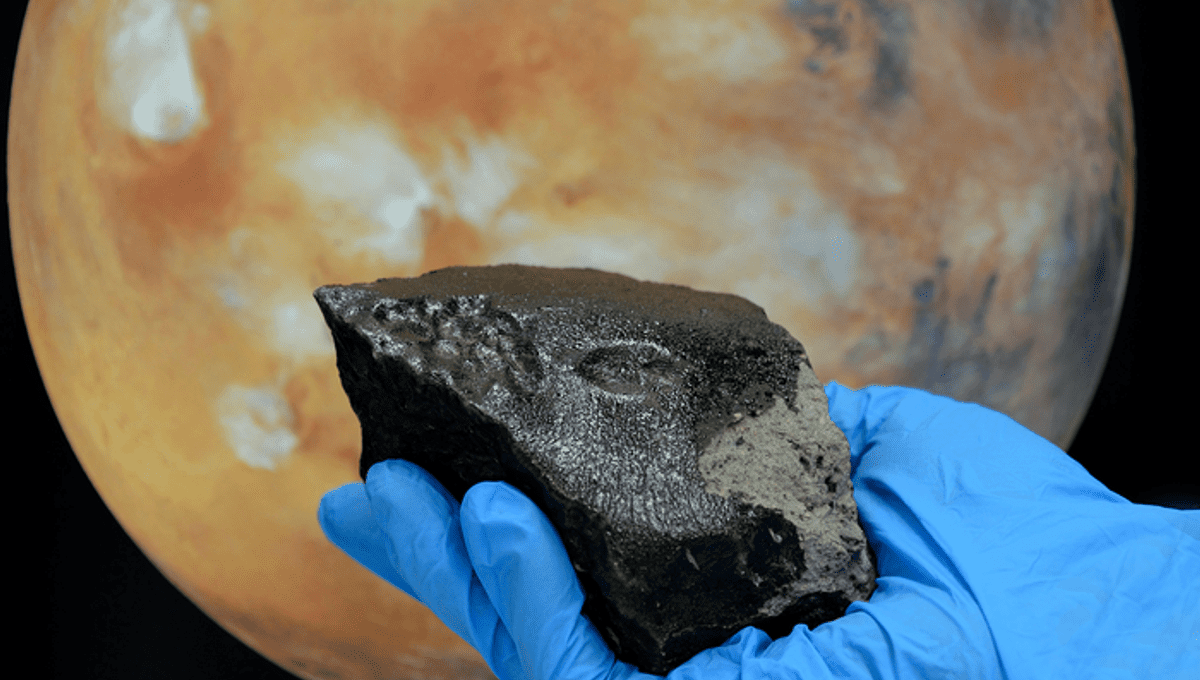
There have only been five Martian meteorites that were spotted as they fell down to Earth. One of them, the Tissint meteorite, fell in Morocco in 2012, 50 kilometers (30 miles) from the town from which it takes its name. New research has revealed that this space rock is incredibly rich in organic compounds.
Organic molecules contain carbon, hydrogen, oxygen, nitrogen, sulfur, and other elements. On Earth, it’s living organisms that are often responsible for the production of these substances. But chemistry without life can also create them. We do not know if Mars has had life forms in its past. The presence of organic compounds shows that the elements for it were there, even if nothing might have come from them.
“Mars and Earth share many aspects of their evolution,” lead author Philippe Schmitt-Kopplin, from the Technical University of Munich and Helmholtz Munich, said in a statement. “And while life arose and thrived on our home planet, the question of whether it ever existed on Mars is a very hot research topic that requires deeper knowledge of our neighboring planet’s water, organic molecules, and reactive surfaces.”
The work revealed the most comprehensive catalog of the diversity of organic compounds found in a Martian meteorite. And that’s not all. The team was able to work out the full menagerie of organic compounds as well as linking this to the specific mineralogy, giving insights into the geological processes that shaped the formation of these compounds.
“Understanding the processes and sequence of events that shaped this rich organic bounty will reveal new details about Mars’ habitability and potentially about the reactions that could lead to the formation of life,” added co-author Andrew Steele, from the Carnegie Institution for Science.
Among the most interesting of the findings was the presence of organic magnesium compounds, which had never been seen on Mars before – a very special connection between the Red Planet’s carbon cycle and the evolution of its rock. The work on this object was more comprehensive than what rovers have been able to find in any single sample, although the Mars Sample Return mission will change that.
Like all the other Martian meteorites, the pieces of Tissint were just some of the bits of Mars that were thrown into space by a violent impact hundreds of millions of years ago, traveling across interplanetary space before hitting our planet.
The findings of this research are published in Science Advances.
Source Link: Martian Meteorite Has Incredible Diversity Of Organic Molecules